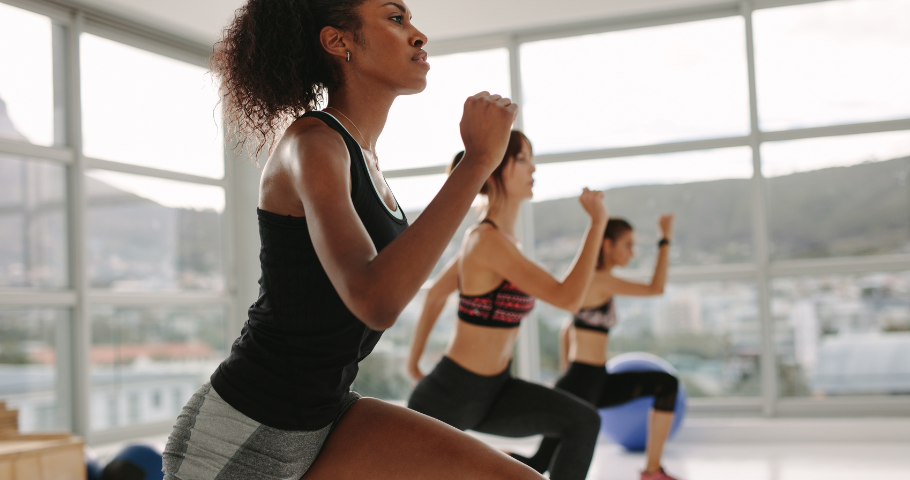Home Gym Air Quality — Is It Helping or Hurting You?
When you think about setting up the perfect home gym, your first thoughts probably revolve around equipment, flooring, and maybe even lighting or music. But there’s one critical factor that often gets overlooked: the air you breathe while working out. And the truth is, poor home gym air quality could be doing more harm than good during your exercise routine.
Let’s break down why the air quality in your workout space matters, what hidden pollutants could be lurking, and how to improve the indoor AQI (Air Quality Index) for a healthier, more effective workout environment.

Why Indoor Air Quality Matters When You Exercise
During exercise, your body demands more oxygen. You breathe more deeply and more rapidly, meaning you’re also inhaling a higher volume of whatever is in the air—good or bad. On average, someone engaging in heavy exertion can increase their breaths per minute significantly, pulling in up to 100 liters of air per minute. That means pollutant intake can rise dramatically depending on the environment.
If your home gym has poor ventilation or is exposed to pollutants, your respiratory system may be taking in elevated levels of airborne irritants that can hinder performance, recovery, and even long-term health. According to the EPA, indoor air can be two to five times more polluted than outdoor air, and pollutant concentrations often spike during physical activity.
VOCs During Exercise: An Invisible Threat
One of the biggest offenders in home gym air is VOCs, or volatile organic compounds. These are chemicals released as gases from certain solids or liquids—and they’re often found in gym flooring, paints, cleaning products, and equipment materials. This process is called off-gassing, and it happens even faster in enclosed or poorly ventilated spaces.
When you work out, your increased respiration rate makes you more vulnerable to VOC exposure, which can cause symptoms like dizziness, headaches, eye irritation, and long-term respiratory issues. Some VOCs may even trigger an inflammatory response in sensitive individuals.
If your gym flooring is made from rubber or foam mats, or your room has recently been painted or cleaned with harsh chemicals, VOCs are likely present in the air. Combat these pollutants with the EnviroKlenz SMART Mount, which features medical-grade filtration and proprietary technology to capture and neutralize airborne chemicals, plus a smart IAQ sensor to detect high VOC and other pollutant levels in real time.
The Problem of CO2 Buildup
Another key concern in indoor workout spaces is CO2 buildup. When a room lacks sufficient airflow, carbon dioxide levels can rise quickly—especially during heavy exertion. High levels of CO2 can lead to fatigue, reduced concentration, and decreased endurance, effectively diminishing the benefits of your workout. This is particularly common in small or sealed-off spaces like basements, garages, or spare rooms repurposed into home gyms.
CO2 is just one component of indoor air that contributes to increased pollutant concentrations and particulate matter exposure. The SMART IAQ Monitor and SMARTView AQI Dashboard allow you to track CO2 and other indoor pollutants in real time, helping you take proactive steps toward a cleaner, more breathable environment.

How to Monitor Your Indoor AQI
Many people don’t realize their indoor air quality is compromised until they start to feel the effects. Investing in an indoor air quality monitor can help you track key pollutants like VOCs, CO2, and particulate matter. Some advanced models even provide real-time readings of your indoor AQI, so you know when to ventilate the space or activate an air purifier.
Temperature inversions—a common weather phenomenon that traps pollutants closer to the ground—can also affect indoor air if the space draws in contaminated outdoor air. Understanding this relationship can help you time your workouts for cleaner conditions.
Try SMARTView—a free air quality dashboard from EnviroKlenz that lets you monitor indoor and outdoor AQI, receive health-based alerts, and personalize your air quality goals based on your space and lifestyle.
Improving Home Gym Air Quality
Here are a few ways to make your indoor workout environment safer and healthier:
- Ventilate Often: Open windows or doors when possible, or install a dedicated ventilation system for your gym area—especially helpful during temperature inversions that trap outdoor pollutants.
- Use Low-VOC Materials: Choose gym flooring, paint, and equipment with low or no VOC ratings to reduce short-term exposure risks.
- Clean Smart: Opt for non-toxic, fragrance-free cleaning products that won’t contribute to off-gassing. This list from the EPA provides safer cleaning alternatives.
- Filter the Air: Use an air purifier with HEPA and carbon filtration to capture VOCs, inhalable particles, and odors. The EnviroKlenz Air System Plus is specifically designed to handle chemical and particulate pollutants in enclosed spaces like home gyms.
- Monitor Continuously: Keep an air quality monitor like the SMART IAQ Monitor running in your gym to stay on top of air quality changes during workouts, especially when heavy exertion is involved.
Breathe Better, Perform Better
Your indoor workout should strengthen your body—not compromise your health. By paying close attention to home gym air quality, understanding the risks of VOCs during exercise, and addressing CO2 buildup, off-gassing, inhalable particles, short-term exposure, temperature inversions, and particulate matter exposure, you can ensure that the air you breathe supports your fitness goals rather than working against them.
So before your next at-home sweat session, take a moment to ask: Is my air helping or hurting me?
Want to know what you’re really breathing in?
Explore SMARTView to track your indoor and outdoor air quality for free, or upgrade your space with the EnviroKlenz SMART Air System and SMART IAQ Monitor for total air control.
